Exploring the 17 Bulb: A Comprehensive Guide
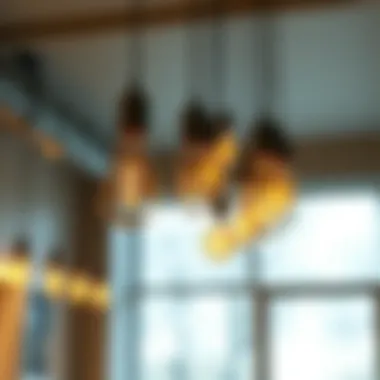
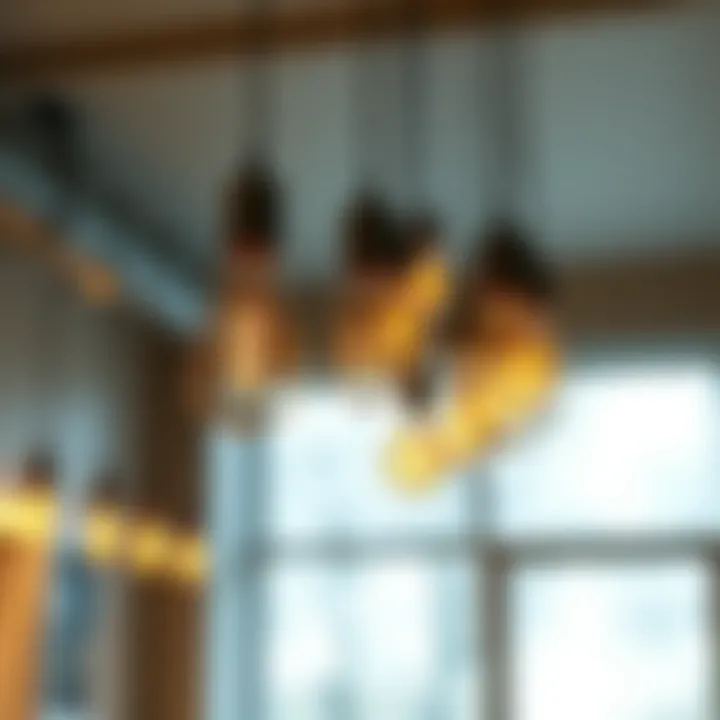
Intro
Lighting is an often-overlooked element in home design that sets the mood, highlights architecture, and enhances overall aesthetics. This article will explore the 17 bulb, a lighting option that stands out due to its unique versatility and widely appealing design. From providing practical light in various settings to offering energy efficiency, the 17 bulb serves multiple purposes within contemporary interiors.
In the following sections, we’ll take a closer look at furniture design styles and how the 17 bulb fits seamlessly into different themes. Homeowners looking to enhance their decor will also benefit from practical tips on selecting and maintaining this exceptional lighting choice. By the end of this guide, readers will gain a deeper understanding of how the 17 bulb contributes to the enchanting interplay of light, space, and style in interior design.
Furniture Design Styles
Overview of Popular Styles
When it comes to home decor, understanding various design styles is crucial. Each style brings its own flavor and character, influencing not just furniture placement but also lighting choices. Scandinavian, for instance, highlights simplicity and functionality, where the 17 bulb can accentuate the clean lines and natural materials typical in such spaces.
Conversely, Mid-Century Modern design celebrates bold colors and organic shapes. In this context, the 17 bulb can become a striking focal point, adding a dash of nostalgia while providing efficient lighting. Meanwhile, Industrial style, with its raw elements and rugged charm, finds harmony with the 17 bulb's utilitarian aesthetic.
How to Mix and Match Styles
Mixing and matching design styles can yield a unique and personalized environment. The key lies in balancing different elements so that each style complements the others rather than clashes. A living room could feature contemporary furniture alongside vintage pieces, with the 17 bulb serving as a bridge that ties the two together through its unique form.
- Integrating textiles and colors from different styles can harmonize the room.
- Opt for accessories that carry a consistent theme, creating a cohesive look.
- Use the 17 bulb strategically to spotlight certain areas, pulling attention towards art or furniture that resonates with your mixed styles.
In the pursuit of a well-designed space, remember that contrast can actually highlight the beauty of individual elements. A gap between the modern and the classic can tell a story, one where the 17 bulb plays a vital role in illuminating your assembled narrative.
Practical Tips for Homeowners
Essential Buying Tips
When considering purchasing a 17 bulb, a few key factors should guide your decision-making process.
- Wattage - Ensure that the bulb provides sufficient output for your needs.
- Color Temperature - Choose between warm and cool tones to fit the ambiance you are seeking.
- Dimmability - Check if it is dimmable for more control over lighting intensity.
- Lifespan - Look for reliability and longevity to reduce frequent replacements.
Maintenance and Care Guidelines
Regular care ensures longevity for your 17 bulb. Here are some guidelines:
- Keep the bulb clean from dust and debris, using a soft cloth.
- Avoid using harsh chemicals which could damage the surface.
- Periodically check wiring for safety, especially if it's in a hard-to-reach area.
By maintaining your 17 bulb, homeowners can enjoy both aesthetics and functionality while ensuring that it remains an effective part of their home lighting.
Remember: The right lighting highlights your space, providing not just illumination but also enhancing the overall experience of your home.
With these insights, homeowners and designers alike can leverage the 17 bulb effectively, marrying aesthetic appeal with practical needs in any interior design context.
Intro to the Bulb
When it comes to navigating the world of lighting, few fixtures blend aesthetic appeal with utility quite like the 17 bulb. It stands as a staple in modern interior design, offering versatility that caters to a variety of settings, making it not just a source of illumination, but also an element of style.
Definition and Origins
The 17 bulb, typically recognized for its unique design and energy-efficient features, has roots that intertwine with traditional lighting methods. Known for its specific wattage and lumen output, this bulb emerged from a growing demand for more sustainable alternatives amidst increasing environmental consciousness. By understanding its origins, we can appreciate its journey from simple incandescent bulbs to a more sophisticated lighting solution.
Originating in the mid-20th century, these bulbs began to gain traction, aligning with advancements in technology that favored eco-friendliness without sacrificing performance. Designers and engineers worked hand-in-hand to create a product that would not only meet the needs of everyday consumers but also reflect contemporary aesthetics.
Notably, the 17 bulb is labeled according to its wattage equivalent; thus, it provides clear guidance for consumers looking for specific brightness aligned with their preferences. This labeling has made it more accessible for those looking to bridge the gap between utility and style in their home.
Significance in Modern Lighting
In today's world, where energy conservation is more critical than ever, the significance of the 17 bulb cannot be overstated. Consumers have become increasingly aware of their carbon footprints, making decisions that prioritize both environmental sustainability and cost-effectiveness in their lighting choices.
By offering lower energy consumption rates compared to traditional incandescent bulbs, the 17 bulb serves as a beacon of modern efficiency. Users can enjoy prolonged lifespans and reduced electricity bills, ultimately making this bulb not just a choice, but a smart investment.
For designers, the 17 bulb opens up a myriad of possibilities. It complements various design styles, from minimalist to rustic, enhancing the overall ambiance without making a flashy statement. Similarly, retailers appreciate its growing popularity among consumers who are looking for informed decisions in their purchases, thus keeping the demand steadfast.
In the end, the 17 bulb epitomizes a balance of practicality and style, dissolved into the backdrop of our daily lives. As we delve deeper into this guide, it becomes apparent that understanding its features and applications significantly enriches the way we perceive lighting within the scope of modern design.
Design Characteristics
When considering lighting, design characteristics play a pivotal role in how a bulb blends into its environment and serves its function. For the 17 bulb, its design is not merely about looks; it encompasses aspects like form, function, and how well it meets the needs of various spaces. From aesthetics to efficiency, understanding these characteristics helps designers, retailers, and homeowners make informed choices.
Physical Attributes
The physical attributes of the 17 bulb include its size, shape, and materials used in its creation. These attributes are essential as they determine where the bulb can be used and how it interacts with light fixtures.
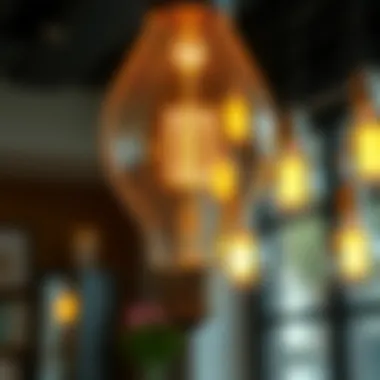

- Size: The dimensions of the 17 bulb may vary, but most follow a standard sizing framework, making them compatible with a wide array of fixtures. Whether it’s a compact design meant for stylish lamp shades or larger variants for expansive ceiling fixtures, the size is designed to fit seamlessly wherever it is placed.
- Shape: The shape helps define the direction and spread of light. A rounded bulb creates a softer ambient glow, while a more pointed or elongated shape can deliver focused lighting. This allows house owners to select bulbs based on their specific lighting needs without compromising on style.
- Material: Different materials lend themselves to different qualities. For example, glass bulbs not only enhance durability but also add a level of sophistication. Other materials can be lighter or more cost-effective, serving diverse consumer preferences.
Available Variants
The versatility of the 17 bulb is further emphasized by its available variants. Each variant caters to specific lighting requirements and personal tastes, broadening their appeal:
Color Temperature
Color temperature plays a significant role in dictating the mood of a space. Ranging from cool whites to warm yellows, the various color temperatures available in the 17 bulb provide users with options depending on their preferences.
- Key Characteristic: The ability to choose between warm (around 2700K) and cool (around 5000K) light is vital. Warm light is often preferred in living areas for its cozy feel, while cooler light is favored in workspaces for its clarity.
- Why it’s Beneficial: This mix allows homeowners to curate environments that fit their lifestyle, enhancing comfort and functionality. A well-chosen color temperature can drastically change how a space is experienced.
- Unique Feature: Furthermore, some newer models now offer dual color temperature options, allowing for adjustments based on the time of day or activity, adding to their versatility.
Shape Options
The shape options of the 17 bulb also provide distinctive advantages. In today’s market, aesthetics are often just as important as functionality.
- Key Characteristic: Beyond the traditional round shape, the 17 bulb can come in various forms like elongated, globe-shaped, or even decorative filament styles.
- Why it’s Popular: Popularity stems from homeowners wanting their lights to integrate into their home decor rather than just serving a functional role. Such intentionality can tie together the overall aesthetic of a space.
- Unique Feature: Decorative shapes can offer unique light patterns, creating visual interest without additional accessories.
Base Types
The base types of the 17 bulb are crucial in ensuring compatibility across different fittings and lamp designs.
- Key Characteristic: Common types include Edison screw bases (E26) and bayonet bases, each designed for straightforward installation.
- Why It’s Essential: Multiple options for bases allow the 17 bulb to fit into various light fixtures, whether in modern or traditional settings. This adaptability is crucial for homeowners looking to upgrade without rehauling their entire lighting setup.
- Unique Feature: Additionally, some bulbs offer adapter solutions for base types, extending their usability across older fixture designs.
In summary, the design characteristics of the 17 bulb highlight its versatility and relevance in modern lighting solutions. Understanding physical attributes, available variants, and compatibility ensures that consumers can make educated decisions that align with their aesthetic preferences and practical needs.
Energy Efficiency
Energy efficiency is crucial in today's world, and understanding its implications when it comes to lighting can make a significant difference in both environmental impact and utility bills. The 17 bulb stands out as a leader in energy efficiency for several reasons, primarily centering around its composition, wattage, and overall performance. With the increasing push for sustainability, making informed decisions about lighting options is paramount. Let's delve deeper into what energy efficiency means in the context of the 17 bulb.
Wattage Comparison
When we talk about wattage, it’s essential to recognize that not all bulbs are created equal. Take the 17 bulb as a case study: it delivers an impressive luminous output while consuming significantly less energy compared to traditional incandescent bulbs. For instance, while an incandescent bulb may require 60 watts to produce a certain light level, the 17 bulb typically only needs about 17 watts. This not only translates to reduced electricity consumption but also extends the longevity of the fixture.
To put things into perspective, consider the following:
- Traditional Incandescent Bulbs:
- 17 Bulb:
- Wattage: 60W
- Lifespan: About 1,000 hours
- Wattage: 17W
- Lifespan: Typically lasts over 25,000 hours
This significant difference in wattage is why many homeowners, designers, and decorators consider switching to the 17 bulb. The lower energy usage doesn’t just affect your bill; it also reduces the strain on power grids, making it an environmentally friendly choice.
Lifespan and Performance
Beyond wattage, the lifespan and performance of the 17 bulb are equally compelling. On average, a 17 bulb can last around 25,000 hours, which is about 25 times longer than a traditional bulb. This durability means fewer replacements and, consequently, less waste. This longevity does not come at the cost of performance; in fact, many users report that the quality of light from the 17 bulb is often superior, providing a warm glow that enhances various settings, from cozy living rooms to productive work spaces.
However, keep in mind that the performance can be affected by factors such as:
- Dimming Capability: Some models offer compatibility with dimmer switches, allowing users to customize brightness levels according to mood or task.
- Heat Emission: The 17 bulb combines efficient energy usage with low heat output, contributing to a cooler environment and less energy wasted on heat.
"Choosing energy-efficient lighting is not just about saving money. It's about making a commitment to sustainability and enhancing the quality of life at home and work."
In summary, the energy efficiency of the 17 bulb not only benefits the environment but also enhances living spaces, making it a practical and stylish choice for anyone looking to improve their lighting. The combination of lower wattage requirements and extended lifespan means that transitioning to 17 bulbs could be a smart long-term investment.
Applications of the Bulb
The applications of the 17 bulb span a wide range of environments, tailoring the lighting experience to meet unique needs. Understanding how this bulb fits into both residential and commercial setups is crucial for those looking to enhance both aesthetics and functionality. Each space it occupies—be it a cozy living room or a bustling retail environment—benefits from its distinctive qualities, making it a versatile choice in modern lighting.
Residential Use
Living Room
In the living room, the 17 bulb shines brightly not only in luminosity but also in mood setting. Its versatility allows homeowners to select various color temperatures that mirror the time of day or the vibe they want to create. The ability to adjust the warmth can craft a relaxed or invigorating atmosphere, as needed. One of the key characteristics of the living room setup is the bulb's compatibility with dimmers, which provides flexibility in brightness—essential for intimate gatherings or movie nights.
However, it’s worth noting that not all variants of the 17 bulb fit all fixtures, so careful consideration of the bulb shape is essential when selecting for this space. The right bulb can elevate the decor, drawing attention to artwork or architecture, while the wrong choice can create a stark contrast that diminishes aesthetic appeal.
Bedroom
When it comes to the bedroom, the 17 bulb is a game changer. Here, it plays a crucial role in creating a serene sanctuary. Soft, diffused light is often preferred, which the 17 bulb can offer through specific variants designed for comfort. The inherent capability to diminish light intensity is invaluable, promoting relaxation and making a solid case for why it stands out in this context.
One unique feature in bedrooms is the use of smart bulbs, enabling remote control or automation. This means waking up naturally with gradually increasing light or winding down with gradually dimming settings. A potential downside could be the need for an accompanying smart device or hub, which some users might find cumbersome. But for those in the know, the benefits far outweigh any challenges.
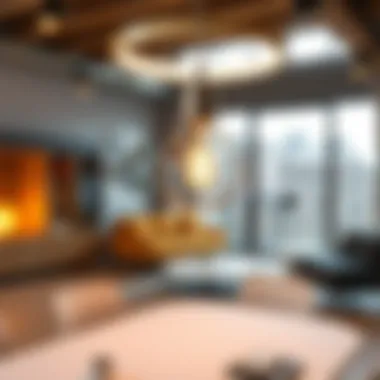
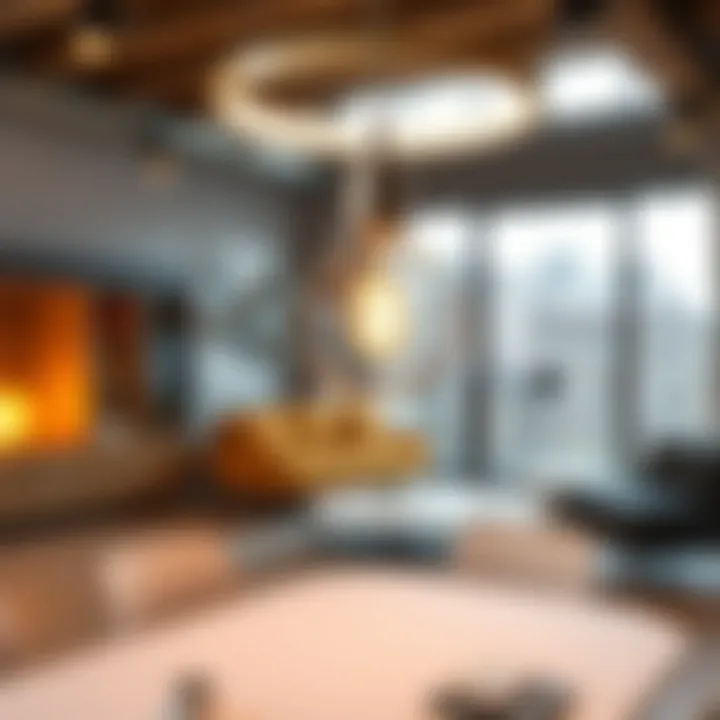
Kitchen
In kitchen spaces, the role of the 17 bulb shifts significantly. Its brightness is paramount here, as good illumination helps not only in cooking tasks but also in creating a welcoming environment for family and friends. Selecting a bulb that offers high-lumen output with a cool color temperature can make all the difference between a functional, utilitarian area and a space that feels warm and inviting.
Moreover, under-cabinet lighting offers an innovative use of the 17 bulb, making food preparation areas lit while keeping the overhead lights dimmed for a cozy ambiance. However, potential issues may arise if bulbs have not been rated for damp locations, which can be a concern in kitchens. Thus, it becomes important to choose products wisely based on their specifications.
Commercial Use
Offices
In office settings, the 17 bulb plays a pivotal role in supporting productivity. Adequate and well-distributed lighting can improve focus and reduce eye strain. The key characteristic of this application is its compatibility with energy-efficient systems. Many workplaces today opt for lighting solutions that not only save costs but also align with sustainability goals.
The ability to customize brightness levels lavishly can help adapt the work environment throughout the day. One major advantage lies in the lifespan of the bulbs; they’re designed to last much longer than traditional options, meaning less frequent replacements. However, switching to the 17 bulb might require an initial investment in compatible fixtures—a crucial consideration for budget-conscious companies.
Retail Spaces
Retail spaces demand a unique lighting approach to attract and engage customers. The 17 bulb can serve an important function by highlighting products while also creating an appealing atmosphere. With a range of color temperatures, retailers can evoke different emotions, such as warmth for home goods or cooler tones for tech products.
Using these bulbs in a mixed lighting approach can also ensure entire displays are well lit without leaving any items in the shadows, which can deter potential buyers. Nevertheless, retailers might face challenges gravitating toward more energy-intensive lighting solutions; balancing cost and aesthetic appeal can be tricky.
Hospitality
In the world of hospitality, ambiance is everything. The 17 bulb is ideal for creating memorable experiences in restaurants, hotels, and bars. The characteristic quality of its light can set a tone that resonates with the brand identity; soft, inviting light in dining areas can enhance meals, while brighter options in lounges encourage socialization.
A particular advantage in hospitality is the ease of integration with smart systems, allowing for lighting adjustments in line with events or changing times of day. The downside, if any, would be ensuring that all installations comply with local safety regulations, particularly in high-traffic areas where maintenance becomes an ongoing concern.
As seen, the applications of the 17 bulb stretch across various spectra, enriching both everyday life in homes and vibrant environments in commercial settings. This adaptability underlines its vital role in modern lighting solutions.
Comparative Analysis
The comparative analysis of the 17 bulb serves a pivotal role in understanding its place in the lighting market. By digging into the comparisons with traditional incandescent and LED alternatives, we uncover crucial insights regarding efficiency, durability, and overall performance. Evaluating the 17 bulb against these common alternatives enables consumers and industry professionals alike to make more informed decisions tailored to their specific needs.
Bulb vs Traditional Incandescent Bulbs
When discussing the 17 bulb in the light of traditional incandescent bulbs, one can't help but appreciate how technology has evolved. Incandescent bulbs have been around for ages, known for their warm glow and simple function. However, they come with darker shadows: they are notoriously inefficient, with a large portion of electrical energy converting into heat rather than light.
On the flip side, the 17 bulb boasts several advantages:
- Energy Savings: It consumes significantly less power, delivering more lumens per watt compared to its incandescent counterpart. This often translates to a decrease in household energy bills.
- Lifespan: Where a typical incandescent might last about 1,000 hours, the 17 bulb can shine on for over 25,000 hours, freeing you from the hassle of frequent replacements.
- Environmental Impact: Fewer replacements mean less waste in landfills and less energy generation needed overall, making the 17 bulb a greener choice.
In essence, while traditional incandescent bulbs hold a charm of nostalgia, the 17 bulb emerges as a practical, cost-effective, and environmentally friendly alternative worth considering.
Bulb vs LED Alternatives
Transitioning to the comparison between the 17 bulb and LED alternatives reveals some interesting debates among homeowners and professionals alike. LEDs have gained popularity for their extreme energy efficiency and low heat output, but when lined up against the 17 bulb, a different story unfolds.
- Quality of Light: Many users find that the 17 bulb produces a softer, more inviting light, reminiscent of incandescent warmth. This can enhance the ambiance in a living space significantly, tailored to those who prize aesthetic value in lighting.
- Cost Considerations: While the initial cost of buying LED bulbs is often higher, when examining the total cost of ownership – including energy savings – the two options balance out. However, the affordability of the 17 bulb can be a plus, especially for larger spaces requiring multiple fixtures.
- Dimming Capabilities: A notable strength of the 17 bulb is its compatibility with various dimming systems, offering greater versatility in adjusting ambiance, a feature that not all LED bulbs manage effectively.
Ultimately, while LEDs hold an upper hand in energy savings and longevity, the 17 bulb shines when it comes to warmth and aesthetic appeal, providing a compelling option for discerning consumers.
"In the world of lighting choices, understanding the nuances can illuminate your decision-making process, quite literally."
Installation and Maintenance
When it comes to lighting, installation and maintenance play a crucial role that often flies under the radar. Understanding the guidelines for proper installation can greatly improve the performance and longevity of the 17 bulb. Likewise, ongoing maintenance practices not only ensure optimal operation but also enhance the aesthetic appeal of your space. Getting these elements right can save you from unnecessary headaches down the road.
Installation Guidelines
Installing a 17 bulb can seem like a walk in the park for some, yet others might feel like they are navigating a maze. Before diving into the actual process, a few preparations are essential. Familiarize yourself with your fixture type and compatibility with the bulb.
- Turn Off the Power: Safety first! Switching off the circuit breaker or the light switch can prevent unfortunate accidents.
- Remove Old Bulb: Carefully twist out the existing bulb, ensuring not to apply too much force, as this could damage the fixture.
- Check the Socket: Look for any signs of wear on the socket. Corrosion or other damage can affect performance.
- Insert the 17 Bulb: Position the bulb over the socket and turn gently until it’s snugly in place.
- Restore Power: Once the bulb is securely installed, it’s time to switch the power back on. Test it out—if it works, you’re golden! If you've followed all these steps and it doesn’t light up, well, it might be time to troubleshoot.
Proper installation directly impacts energy efficiency and bulb lifespan. If it’s not done right, not only might you end up with a flickering light, but you could also reduce the bulb’s intended efficacy.
Maintenance Tips
Cleaning Procedures
Routine cleaning of your 17 bulb contributes tremendously to its lifespan and performance. Dust and grime can accumulate quickly, and they can dull the light output. Here’s how to keep things in tip-top shape:
- Frequency: Aim to clean the bulbs every couple of months. Once you establish this practice, it becomes second nature.
- Method: Use a soft, dry cloth or microfiber cloth to wipe the bulb gently. Avoid using abrasive materials that may scratch the surface.
- Cleaning Solution: Should the bulbs be particularly grimy, a mild soapy water solution works wonders; just ensure it’s completely dry before using the bulb.
This cleaning regimen is a popular choice among homeowners and decorators alike because:** it extends lifespan and enhances efficiency.** Over time, you’ll find that the benefits of a little regular upkeep far outweigh the effort.


Handling and Care
Handle the 17 bulb with as much care as you can manage. A bulb that’s improperly handled can lead to performance issues or even premature burnout.
- Avoid Touching Glass: Oils from your skin can accumulate on the bulb, leading to hot spots and reducing lifespan. Ideally, use a cloth or gloves when handling.
- Transport Carefully: If transporting the bulb, use original packaging or a padded box to prevent breakage.
- Storage: Keep extra bulbs in a cool, dry place. Avoid leaving them in high-humidity areas.
By focusing on careful handling, you’ll reap the rewards of reduced risk of accidents and a more reliable bulb performance. Investing a bit of time can save a hefty amount in the long run.
Remember, the longevity and effectiveness of lighting often hinge not just on the type of bulb used, but the commitment to installation and maintenance protocols.
Troubleshooting Common Issues
When it comes to lighting, the occasional hiccup is part and parcel of the game. In this section, we will delve into common issues that users might encounter while using the 17 bulb and how to resolve them efficiently. Understanding these problems is not just about rectifying issues; it’s about enhancing your overall experience and ensuring the longevity of your lighting investment. Addressing these common concerns can save time, energy, and potentially even cost savings down the line.
Flickering Light
Flickering light can be quite the headache. Imagine you’re enjoying a quiet evening at home, and suddenly, the lights start dancing around like they're at a disco. This isn’t just annoying; it can also lead to more serious problems down the road.
There are several reasons why your 17 bulb might flicker:
- Loose Bulb: Sometimes the simplest explanation is the right one. Ensure that your bulb is tightly screwed into the socket. A loose connection can cause the light to flicker intermittently.
- Voltage Fluctuations: A sudden spike or drop in voltage can result in your bulbs flickering. This might occur due to high-powered appliances temporarily drawing more power, like air conditioners or refrigerators.
- Incompatible Dimmers: If you're using a dimmer switch, make sure it's compatible with the 17 bulb. Not all dimmers play nice with LED technology, which can lead to flickering.
To troubleshoot, start with tightening the bulb, and then check your electrical system. It might be time to consult an electrician if you suspect voltage issues. An informed approach ensures you’re not left in the dark, literally.
Short Lifespan
Another common complaint with the 17 bulb is a shorter-than-expected lifespan. No one wants to be in a position where they’re constantly swapping out bulbs. It’s frustrating and can be quite costly over time. Understanding the factors that influence the lifespan of these bulbs can help mitigate problems.
Several key aspects can affect how long your 17 bulb will last:
- Heat Exposure: High temperatures can shorten the lifespan of LED bulbs. Ensure that they are not installed in enclosed or poorly ventilated fixtures. Heat buildup is a silent killer when it comes to longevity.
- Frequent On/Off Switching: While one of the advantages of LED bulbs is their ability to handle frequent cycling, it’s worth noting that constantly turning the bulb on and off can eventually take a toll.
- Poor Quality Power Supply: Power surges and sags can reduce the life expectancy of your bulbs significantly. If you often experience these fluctuations, consider investing in surge protectors or using a more stable power source.
To extend the life of your 17 bulb, be mindful of its placement and usage patterns. Doing so will not only save you from the hassle of frequent replacements but also ensure that you get the most out of your investment.
"A flickering light may just be begging for attention; heed its call before it dims permanently."
Paying attention to these common troubleshooting points can empower you as a user, giving you the knowledge to tackle problems before they escalate into bigger issues. By adopting a hands-on approach to resolving flickering lights and shortened lifespans, you create a smoother, more efficient lighting environment.
Future Trends in Lighting Technology
The landscape of lighting technology is rapidly evolving, providing not only enhancements in energy usage but also integrating smart capabilities that cater to contemporary lifestyle demands. Exploring the future trends within this area allows designers, retailers, homeowners, decorators, and DIYers alike to align their lighting choices with innovative solutions that promise both functionality and aesthetic appeal. Essentially, embracing these trends helps in creating environments that are not only well-lit but also smarter and more adaptable.
Advances in Energy Efficiency
Energy efficiency has taken the center stage in the lighting industry, driven by growing environmental concerns and the need to reduce energy costs. One of the most significant innovations in this field is the continual improvement of LED technology. Even within the 17 bulb category, advancements mean that these bulbs are now more efficient than ever. A standard 17 bulb now can deliver impressive lumens per watt, resulting in lower energy consumption without compromising brightness.
For instance, the transition from traditional incandescent to the 17 bulb style may show potential energy savings up to 80%. Such a shift is not just beneficial for the environment but also for pocketbooks over time. In addition to performance improvements, the life expectancy of these bulbs has soared, often exceeding 25,000 hours. This longevity reduces waste while offering lower replacement costs.
"Energy-efficient lighting is not just about saving money; it’s about being part of a larger movement toward sustainability and responsible energy use."
Moreover, adapted technologies such as dimmable settings and smart sensors can significantly reduce energy usage further, tailoring the lighting output according to the time of day or room occupancy. As homes and businesses adopt these practices, the collective mindset shifts toward more sustainable living.
Smart Lighting Integration
Smart lighting is revolutionizing how we interact with our environments, allowing for an unprecedented level of control and customization. The integration of the 17 bulb with smart home systems enables users to operate their lights through mobile apps, voice commands, or timers.
This transformation is exemplified in products from major manufacturers like Philips with their Hue line, which can sync lighting with other devices for an immersive experience. Homeowners can set schedules or adjust brightness depending on the time of day, further emphasizing the effectiveness of energy management. The benefit here is twofold: improved user convenience and enhanced energy efficiency.
In the commercial sector, the shift to smart lighting can be equally impactful. Offices may utilize adaptive lighting that adjusts based on natural light availability, fostering a healthier working environment while significantly cutting down on energy outputs.
As this technology continues to develop, innovations such as using AI algorithms predictively adjusting lighting levels could become commonplace. This future may see light adapting in real-time to human activity and preferences, creating spaces that genuinely respond to their inhabitants.
For further reading on energy efficiency and smart technology advancements, visit Wikipedia or explore case studies on smart lighting integration on researchgate.net.
Epilogue
Reflecting on the journey through the various dimensions of the 17 bulb, it's evident that this lighting option holds substantial significance in both aesthetic and practical realms. This article emphasizes how the 17 bulb stands out in diverse settings from cozy homes to bustling commercial spaces. The blend of energy efficiency and appealing design make it an esteemed choice among designers, decorators, and homeowners alike.
Recap of Key Points
To encapsulate the essence of the 17 bulb:
- Design Characteristics: From unique physical attributes to the range of available shapes and base types, its design versatility suits a plethora of tastes and requirements.
- Energy Efficiency: Comparison of wattage and lifespan clearly shows that opting for the 17 bulb is not just beneficial for the environment, but also economical in the long run.
- Applications: This bulb shines in residential areas like living rooms and bedrooms, while also excelling in commercial applications spanning offices and retail spaces.
- Installation and Maintenance: Understanding the straightforward installation guidelines, alongside simple maintenance tips, empowers users to make the most of this lighting solution.
- Troubleshooting: Tackling common issues that arise, such as flickering lights or shortened bulb lifespans.
- Future Trends: With the advancement in energy efficiency and the rise of smart lighting integration, the 17 bulb is likely to evolve further, ensuring its place in future lighting solutions.
Final Thoughts
In summation, the 17 bulb is more than just a source of illumination. Its thoughtful characteristics and robust applications make it a linchpin in modern lighting design. As our insights and appreciation deepen for this extraordinary bulb, it's clear that lighting transcends mere functionality; it shapes mood, enhances aesthetics, and evolves with technological advancements. For those looking to embrace a more sustainable and visually appealing approach to lighting in their spaces, the 17 bulb is a noteworthy contender.
For further reading and insights on lighting technology, consider visiting resources such as Wikipedia on Light Bulbs and Britannica articles on Energy-efficient Lighting for a broader perspective.















